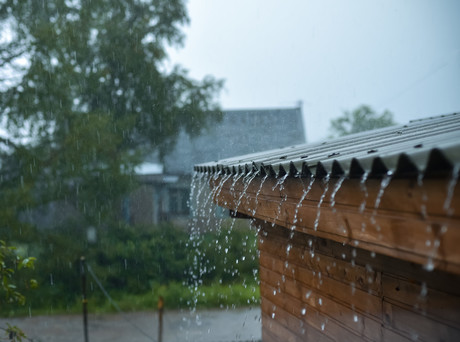Changing stormwater management charges would reduce runoff

Changing the way Melbourne charges for stormwater management would impact behaviour, and in turn potentially reduce stormwater runoff volumes by 59 billion litres and annual management costs by $191 million by 2050.
That’s according to new research from former Victorian Chief Water Scientist Professor Peter Coombes, offering a compelling view of the social and economic impact of stormwater.
Stormwater runoff causes problems through flooding, plus the erosion and the transportation of nutrients, chemical pollutants, litter and sediments to waterways. Most water customers are unaware that they pay for the stormwater catchment in their community as a flat rate charge on their bill, meaning that no matter how much they contribute to the volume of stormwater generated by their property layout, they pay the same rate as someone with a higher impact.
In his report ‘The Greater Melbourne Alternative Water Plan’, commissioned by Kingspan Environmental, Prof Coombes proposed a different way of funding stormwater infrastructure based on the area of land generating runoff. In a recent submission to the Stormwater 2018 Conference, Prof Coombes investigates what would happen if we charged for stormwater management based on the amount of impervious area like paving and concrete driveways on each property. Landowners could control their cost by reducing the impervious area or compensate through measures like rainwater harvesting.
“Our current system of fixed charges from local government and Melbourne Water means that there is no clear relationship between the fixed charges paid by landowners and the demand generated for stormwater infrastructure,” said Prof Coombes. “The landowners paying the stormwater charge are not necessarily the ones causing the problems.
“Plus, the value of stormwater infrastructure in Melbourne is much greater than generally recognised, about $20 billion in 2010 rising to $40 billion in 2050, and exceeds the value of potable water infrastructure.”
Prof Coombes claims his research has counted all of the benefits.
“However, consider the extra motivation it would provide,” he said. “If we know we were paying for concrete, there’d be a real economic benefit to reducing impervious areas and increasing gardens and rainwater harvesting with all the obvious benefits. This is a real shift in our thinking.”
The actual tariff would probably be quite low for water users, only about $0.86/m2 of impermeable area on average across Melbourne for stormwater and environmental services. But the impact would be considerable, reducing stormwater runoff volumes by 59 billion litres and annual management costs by $191 million by 2050.
The Greater Melbourne Alternative Water Plan also recommends a sustainable buildings approach using mandatory water efficiency, including the use of rainwater harvesting — an approach which could see Greater Melbourne save up to 100 billion litres of water annually by 2050, according to Prof Coombes. The full report can be downloaded from the Kingspan Environmental website.
New filter tech targets PFAS in water
Researchers at Monash University have developed a water filtration membrane that effectively...
Water shortages prompt Vic Government to boost supply
The decision follows Geelong water storages hitting a six-year low and a double-digit annual...
EPOC Enviro secures patent for PFAS remediation technology
Australian company EPOC Enviro has announced the approval of its foam fractionation patent,...










